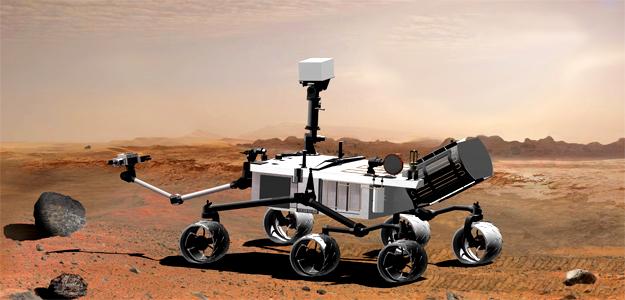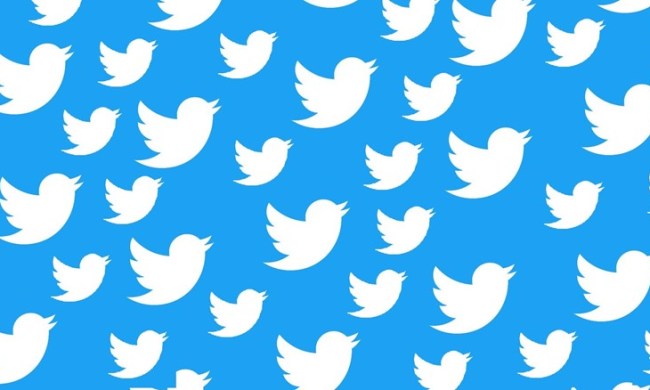 Judgment Day, as foretold by the Terminator series, must be near. We sent a robot to Mars earlier this week and it started tweeting back to us with facts about the mission. It also engaged in some banter with Sesame Street and dropped the popular “I’m in you!” Internet meme. It’s like a titanium version of Kevin Smith.
Judgment Day, as foretold by the Terminator series, must be near. We sent a robot to Mars earlier this week and it started tweeting back to us with facts about the mission. It also engaged in some banter with Sesame Street and dropped the popular “I’m in you!” Internet meme. It’s like a titanium version of Kevin Smith.
And it’s also the best thing NASA could have done.
What was probably started as a joke in one of the JPL’s meetings (probably by the guy with the mohawk) has turned into one of the biggest PR coups NASA has had in years. People love the tweeting rover, even if it’s not precisely the rover that’s tweeting. You can tell them that the Curiosity rover cost $2.5 billion and they will say, to a man, that the money was well-spent because they are now emotionally involved.
The American people haven’t been emotionally involved in a space mission since the Hubble Space Telescope, and that’s the fundamental reason why we barely have a space program today.

The current malaise of America’s space program offered a rare opportunity for my family to take another trip to Kennedy Space Center recently. We strode past gates that few people went beyond when I was a kid. “Shoot first, ask questions later” kinds of places. All for the price of a tour ticket. No background check. No perusal of identification. Children received a discount, so we took my 3-year-old daughter.
The Vehicle Assembly Building was the largest building in the world by volume when it was completed. I have actually visited one of the buildings that surpassed it, the Boeing assembly building near Seattle, and I met it with a “meh?” I knew what impressive buildings looked like (I passed the VAB on the way to the beach or the mall as a kid), and Boeing’s overgrown warehouse wasn’t impressive. An open cube 52 stories high was impressive.
Our tour guide made it a point of telling us that NASA still considers the VAB the world’s largest one-story building. Like that will ever be a question on “Jeopardy!”
What saddened me wasn’t the fact that a man with a speaker attached to him was leading us around this iconic structure (again, a place stray tourists would have been shot 10 years ago), his voice echoing around one completely vacant hangar bay, but that the adjacent hangar bay wasn’t vacant at all.
Parked at an angle, as if someone had left the engine running and was just jumping out for a quick second to pick up something at 7-11, was the Space Shuttle Discovery (of course, the engines weren’t actually left running; we would have been incinerated).
It wasn’t hanging from the massive cranes attached to the roof, as it had been while being fitted to its fuel tank and rockets for each of its 39 missions. It was simply cast aside, waiting for its ride to the Smithsonian. It might as well have had a handicapped parking tag on the rear-view mirror.

The plans for KSC are fluid. One private company wants to lease a certain building. Two or three want to sublet the VAB. In other words, the Center is slowly being auctioned off.
Notice how I didn’t say anything about NASA? If we can stop paying for wars, maybe they’ll use it to go to Mars. But space exploration is not for countries that are bankrupt, either of money or imagination. You would be hard-pressed to find a NASA employee out there (if you can find one in general) who wouldn’t say this country has run out of both.
Curiosity isn’t the solution itself. Its mission is designed to last for more than a year and a half. People will have forgotten about it long before then. But the lesson of involving the American citizen in the space program again is a lesson that can be reused over and over again.
NASA needs to start selling itself once more. Show us benefits. Show us excitement. Show us leading the world and we’ll be willing to bankroll anything, but we have to be invested in the process. Involve us, and not just when it comes time to name a spaceship.
Believe it or not, the politicians still listen to us occasionally. If we want something, like a person on Mars instead of a personable robot, they will find the trillion dollars it takes.
But if you let us forget that NASA exists, we will.


